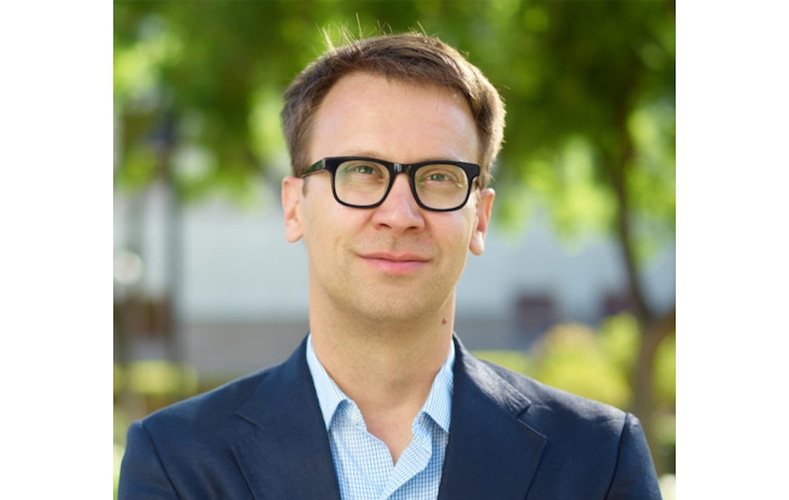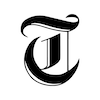Joseph Fielding Smith’s family tree alone makes him a significant player in the history of The Church of Jesus Christ of Latter-day Saints.
His father, Joseph F. Smith, was the faith’s sixth president. His grandfather was Hyrum Smith, who was slain with his great-uncle, church founder Joseph Smith. His son-in-law, in fact, was apostle Bruce R. McConkie, a theological kindred spirit.
Joseph Fielding Smith served as an apostle for 60 years, church historian for 49 and as the faith’s 10th president for two. But he will forever be remembered more for his prose and his polemics than for his positions or his pedigree.
A conservative and orthodox thinker, he wrote more than two dozen books, answered religious questions from lay members and engaged in high-level, high-stakes debates with fellow apostles and other leading Latter-day Saint intellectuals.

Matthew Bowman is Howard W. Hunter Chair of Mormon Studies at Claremont Graduate University. He is the author of “Joseph Fielding Smith: A Mormon Theologian."
Joseph Fielding Smith was, scholar Matthew Bowman argues, “the most important Latter-day Saint theologian of the 20th century.”
Here are lightly edited excerpts from The Salt Lake Tribune’s “Mormon Land” podcast in which Bowman, head of Mormon studies at Claremont Graduate University and author of “Joseph Fielding Smith: A Mormon Theologian,” talks about this towering Latter-day Saint man of letters:
Did the fact that Smith’s father, church President Joseph F. Smith, had to hide from federal agents during polygamy crackdowns contribute to his feeling that the faith was under siege?
Yeah, absolutely. One of his most traumatic memories was at Christmastime when his father and mother said goodbye to all of their children and fled the country to avoid prosecution. That really, really made an impact on him. He writes much later in his life about the memory of it, and there’s real, real bitterness and fear still in that writing. That gives him this initial impression that the world is against his faith. As he grows up, he learns about the death of his own ancestors, Hyrum Smith and Joseph Smith. His own father saw [their] bloody bodies and told his sons about it. There’s a real legacy of family trauma that Joseph Fielding Smith certainly carries throughout his life. His sometimes aggressive polemics and his aggressive defenses of his church are rooted in that.
(The Church of Jesus Christ of Latter-day Saints) A statue of Joseph Smith and his brother Hyrum outside Carthage Jail, where they were gunned down.
He was widowed three times and his third wife was Jesse Evans Smith, a famous singer with the Tabernacle Choir. She was able to bring out his funny side, right?
He is often somewhat stiff. He is very serious. He is stern, but she is a kind of legendary figure. There have been academic articles written about how entertaining she is and about the folklore that grows up around her. There’s a famous story of her once visiting a church congregation with her husband, and she is complimented on her clothing, and she tells the people who compliment her that she is wearing her Bible dress. They ask her what that means. And she gestures to her bosom and says, “Lo and behold, L-O-W.”
How influential do you think his writings were, and are they still?
Quite. The two most important reasons are: how prolific he is and how long he is around. He is writing his first works of Latter-day Saint theology for popular audiences. And he’s able to connect with them because he has that sense. His first writings to that end are published in the first decade of the 20th century, and he’s still publishing 70 years later. A whole generation of Latter-day Saints who grew up with him presented as an authority, including a number of other apostles. Harold B. Lee and Mark Petersen are colleagues of his in the Quorum of the Twelve Apostles in the 1950s and ‘60s. But they were boys when he began writing. These apostles were part of a campaign in the Church Educational System to spread the work of Joseph Fielding Smith … and it enters, when the correlation movement happens in the 1970s, into curriculum committees. And his work is really cited very, very frequently in church curriculum in the second half of the 20th century.
What happened in the debate on evolution between Smith and church general authority B.H. Roberts?
(Utah State Historical Society) Latter-day Saint theologian B.H. Roberts differed with Joseph Fielding Smith over "pre-Adamites."
In the late 1920s, Roberts is in his early 70s and has spent years of his life writing his magnum opus, “The Truth, The Way, The Life.” It was what we call “a systematic theology,” an attempt to explain everything from the very beginnings of the universe to end with Judgment Day, and to cover everything in between. Roberts proposes that there may well have been a group of humanlike beings on the Earth before Adam and Eve, and, in fact, the Earth may be many, many, many, many years older than Joseph Fielding Smith thought it was. These “pre-Adamites,” as they’re sometimes referred to, explain what paleontologists have discovered: fossilized skeletons of creatures that look a lot like human beings from millions and millions of years ago. … Roberts is hoping that “The Truth, The Way, The Life” will be published by the church in some way. A committee is convened to review this manuscript and [apostle] Fielding Smith is on this committee. He really, really doesn’t like this book. He has a lot of issues with it, but the major issue is this question of pre-Adamites. Fielding Smith believes that there was no death before the fall of Adam. And the resurrection of Jesus Christ [is needed to overcome] the fall in that way. If there was death before Adam and Eve, that minimizes the impact of Jesus for Fielding Smith. There are a series of meetings in which both men present their case to the Quorum of the Twelve Apostles, and then ultimately to the First Presidency. Roberts argues that his book should be published. Fielding Smith says no; this is heretical. Ultimately, you might say that nobody wins. In his diary, then-President Heber J. Grant writes, “I see no advantage to a continuance of this discussion.”
Did Smith, in the end, get more of a victory than Roberts?
Ultimately, Fielding Smith simply outlives everybody. B.H. Roberts dies in 1933. James Talmage, who was also an apostle and who was quite sympathetic to Fielding Smith, also dies in 1933. Grant dies in 1945. John Widtsoe, another scientist apostle, dies in 1952. Fielding Smith then publishes his own book, “Man: His Origin and Destiny,” which is marginally based on much of the material that he compiled to debunk B.H. Roberts….[It] becomes incredibly influential.
(FamilySearch) James E. Talmage, 1862-1933, would become a Latter-day Saint apostle.
(The Church of Jesus Christ of Latter-day Saints) Apostle John A. Widtsoe.
How did Smith lead the effort from the ‘50s to the ‘70s to transform BYU into a large research university, while trying to eliminate instructors who didn’t share his views of orthodoxy?
In the early 1950s, Ernest Wilkinson becomes not only president of [church-owned Brigham Young University] but also commissioner of church education as a whole. Wilkinson is somewhat sympathetic to Fielding Smith, but Wilkinson is much more politically conservative. Still, there is this kind of alliance across a number of these figures, Wilkinson and Fielding Smith and particularly [apostle and future church President] Harold B. Lee, who begin trying to create uniformity in the teaching of religion in the church — from the seminaries, all the way up to BYU itself. In the early 1950s, in [church President] David O. McKay’s diaries, you can find Wilkinson complaining to McKay about the faculty and wanting more control over the faculty. Wilkinson asks McKay if he can see tithing records for faculty. He hires Cleon Skousen, who is a very, very kind of conspiratorial thinker along the lines of [apostle and future church President Ezra Taft] Benson. In one summer session in 1954, there are six weeks of training for religion teachers. Harold B. Lee is in charge, and he assigns “Man: His Origin and Destiny” as required reading. At one of these sessions. Lowell Bennion, who is a teacher at the [church’s] University of Utah Institute, challenges Fielding Smith on questions of race and the priesthood/temple ban. Later, Wilkinson forces Bennion out of his position as an educator, in part because of his position on questions of race, but also on his temerity to challenge someone like Joseph Fielding Smith. So there is a kind of tightening of what is talked about with religion across church education.
Who is more conservative and/or controversial? Bruce R. McConkie or Joseph Fielding Smith?
(The Salt Lake Tribune) Latter-day Saint apostle Bruce R. McConkie, left, and his popular but controversial book, "Mormon Doctrine."
Fielding Smith emerges in church leadership at a time when he and people who believe like him are really the distinct minority. When he becomes an apostle in 1910, the Widtsoes and the Talmages and the B.H. Robertses are in charge. They’re the ones who are writing all the curriculum. They’re the ones everyone’s paying attention to. So he really does lash out in some ways, and tries to assert himself and butts heads with people, even at one point he has a real dispute with [apostle] J. Reuben Clark over doctrine. But by the ‘50s and ‘60s and ‘70s, when McConkie [Smith’s son-in-law] becomes a general authority, and then later, an apostle, more or less all these new younger apostles think like Fielding Smith does. So McConkie is much less an outlier at that point. In fact, he is heralded from the very beginning as sort of the great fount of wisdom for all of us. Whereas, you know, in 1920 or so, Fielding Smith is not that.
To hear the full podcast, go to sltrib.com/podcasts/mormonland. To receive full “Mormon Land” transcripts, along with our complete newsletter and access to all Tribune religion content, support us at Patreon.com/mormonland.
Note to readers • This story is available to Salt Lake Tribune subscribers only. Thank you for supporting local journalism.






